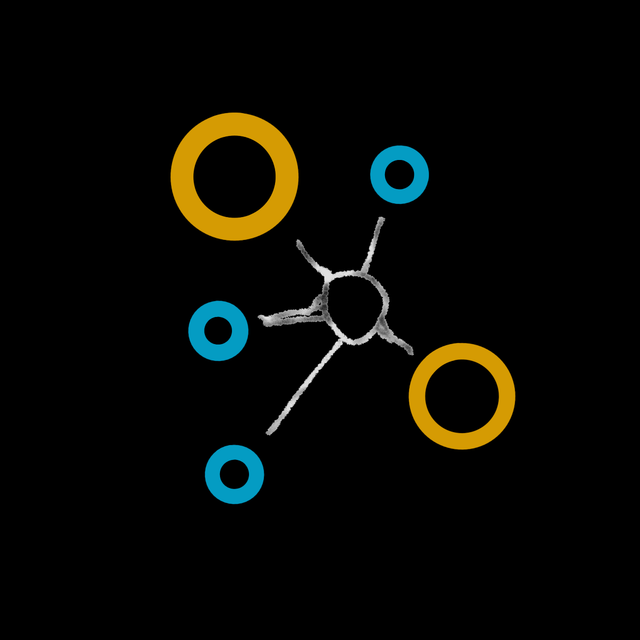RAW DATA SECURITY BY USING ELGAMAL AND SHA 256 PUBLIC KEY ALGORITHM
##plugins.themes.academic_pro.article.main##
Abstract
The development of information technology has grown exponentially and various of data collections and its method has been obtained. In the era of big data, data has now become an asset that held important values, while in the implementation of data delivery, it clearly is not always safe. One of the method to secure data delivery is data encryption using Cryptography. Cryptography provides an encryption service to secure data delivery by transforming it to random values so that it can no longer be read. The goal in this study was to produce an application that could be used to encrypt data, using ElGamal's cryptography method and hash checking using the SHA256 algorithm. After encryption, to ensure the encrypted data is still the original data without any changes or manipulation by unauthorized 3rd party then done by checking the hash generated using SHA256 algorithm. The data used in this study was a sample of raw data from the ATPWTP survey (ability to pay and willing to pay) conducted by the BPS Cirebon (Central Statistics) in 2019 and the data was in the form of Excel and txt files. The encryption process resulted in a cipher larger than the plaintext and takes longer for the data encryption process than during the data cipher decryption process.
##plugins.themes.academic_pro.article.details##

This work is licensed under a Creative Commons Attribution-NoDerivatives 4.0 International License.
References
- T. Wang, Y. Mei, W. Jia, X. Zheng, G. Wang, and M. Xie, “Edge-based differential privacy computing for sensor–cloud systems,” J. Parallel Distrib. Comput., vol. 136, pp. 75–85, Feb. 2020.
- S. Madhavapandian and P. MaruthuPandi, “FPGA implementation of highly scalable AES algorithm using modified mix column with gate replacement technique for security application in TCP/IP,” Microprocess. Microsyst., vol. 73, p. 102972, 2020.
- K. Rani and R. K. Sagar, “Enhanced Data Storage Security in Cloud Environment using Encryption , Compression and Splitting technique,” 2017.
- S. Patii and N. Rai, “An effectual information probity with two TPAS in cloud storage system,” 2017 Third Int. Conf. Sci. Technol. Eng. Manag., pp. 432–434, 2017.
- T. Hidayat and R. Mahardiko, “A Systematic Literature Review Method On AES Algorithm for Data Sharing Encryption On Cloud Computing,” Int. J. Artif. Intell. Res., vol. 4, no. 1, pp. 49–57, Apr. 2020.
- V. K. Soman and V. Natarajan, “An Enhanced hybrid Data Security Algorithm for Cloud,” no. July, pp. 421–424, 2017.
- M. I. S. Reddy and A. P. S. Kumar, “Secured Data Transmission Using Wavelet Based Steganography and Cryptography by Using AES Algorithm,” Procedia Comput. Sci., vol. 85, no. Cms, pp. 62–69, 2016.
- T. Hidayat, D. Sianturi Tigor Franky, and R. Mahardiko, “Forecast Analysis of Research Chance on AES Algorithm to Encrypt during Data Transmission on Cloud Computing,” in 2020 2nd International Conference on Broadband Communications, Wireless Sensors and Powering (BCWSP), pp. 163–166, Sep 2020.
- K. Hariss, H. Noura, and A. E. Samhat, “Fully Enhanced Homomorphic Encryption algorithm of MORE approach for real world applications,” J. Inf. Secur. Appl., vol. 34, pp. 233–242, Jun. 2017.
- D. Nuñez, I. Agudo, and J. Lopez, “Proxy Re-Encryption: Analysis of constructions and its application to secure access delegation,” J. Netw. Comput. Appl., vol. 87, pp. 193–209, Jun. 2017.
- S. Amamou, Z. Trifa, and M. Khmakhem, “Data protection in cloud computing: A Survey of the State-of-Art,” Procedia Comput. Sci., vol. 159, pp. 155–161, 2019.
- W. Al Etaiwi and S. Hraiz, “Structured encryption algorithm for text cryptography,” J. Discret. Math. Sci. Cryptogr., vol. 21, no. 7–8, pp. 1559–1572, Nov. 2018.
- B.-H. Lee, E. K. Dewi, and M. F. Wajdi, “Data security in cloud computing using AES under HEROKU cloud,” in 2018 27th Wireless and Optical Communication Conference (WOCC), pp. 1–5, Apr. 2018.
- Y. Liu, W. Gong, and W. Fan, “Application of AES and RSA Hybrid Algorithm in E-mail,” in 2018 IEEE/ACIS 17th International Conference on Computer and Information Science (ICIS), pp. 701–703, Jun. 2018.
- K. M. Akhil, M. P. Kumar, and B. R. Pushpa, “Enhanced cloud data security using AES algorithm,” in 2017 International Conference on Intelligent Computing and Control (I2C2), vol. 2018-Janua, pp. 1–5, Jun. 2017.
- M. D. Boomija, “Secure data sharing through additive similarity based ElGamal like encryption,” in 2016 2nd International Conference on Advances in Electrical, Electronics, Information, Communication and Bio-Informatics (AEEICB), pp. 652–655, Feb. 2016.
- Q. Wu, B. Qin, L. Zhang, J. Domingo-Ferrer, O. Farras, and J. A. Manjon, “Contributory broadcast encryption with efficient encryption and short ciphertexts,” IEEE Trans. Comput., vol. 65, no. 2, pp. 466–479, 2016.
- A. S. Babrahem and M. M. Monowar, “Preserving confidentiality and privacy of the patient’s EHR using the OrBAC and AES in cloud environment,” Int. J. Comput. Appl., vol. 7074, pp. 1–12, Aug. 2018.
- P. Sivakumar, M. NandhaKumar, R. Jayaraj, and A. S. Kumaran, “Securing Data and Reducing the Time Traffic Using AES Encryption with Dual Cloud,” in 2019 IEEE International Conference on System, Computation, Automation and Networking (ICSCAN), pp. 1–5, Mar. 2019.
- J. C. S. dos Anjos et al., “Fast-Sec: an approach to secure Big Data processing in the cloud,” Int. J. Parallel, Emergent Distrib. Syst., vol. 34, no. 3, pp. 272–287, May 2019.
- Z. Deng, K. Li, K. Li, and J. Zhou, “A multi-user searchable encryption scheme with keyword authorization in a cloud storage,” Futur. Gener. Comput. Syst., vol. 72, pp. 208–218, Jul. 2017.
- E. Jintcharadze and M. Iavich, “Hybrid Implementation of Twofish, AES, ElGamal and RSA Cryptosystems,” in 2020 IEEE East-West Design & Test Symposium (EWDTS), pp. 1–5, Sep.2020.
- D. Rachmawati, M. A. Budiman, and M. I. Wardhono, “Hybrid Cryptosystem for Image Security by Using Hill Cipher 4x4 and ElGamal Elliptic Curve Algorithm,” in 2018 IEEE International Conference on Communication, Networks and Satellite (Comnetsat), pp. 49–54, Nov. 2018.
- I. Yakymenko, M. Kasianchuk, O. Gomotiuk, G. Tereshchuk, S. Ivasiev, and P. Basistyi, “Elgamal cryptoalgorithm on the basis of the vector-module method of modular exponentiation and multiplication,” in 2020 IEEE 15th International Conference on Advanced Trends in Radioelectronics, Telecommunications and Computer Engineering (TCSET), pp. 926–929, Feb. 2020.
- T. R. Poojitha and S. Santhanalakshmi, “Assured privacy and authentication of health data in cloud using cryptographic algorithm,” in 2018 3rd IEEE International Conference on Recent Trends in Electronics, Information and Communication Technology, RTEICT 2018 - Proceedings, pp. 273–280, May. 2018.
- Z. Hua and F. Xia, “A new cryptosystem and digital signature scheme based on ElGamal cryptosystem,” in 2011 International Conference on Computer Science and Service System (CSSS) - Proceedings, pp. 998-1000, 2011.
- K. El Makkaoui, A. Beni-Hssane and A. Ezzati, "Cloud-ElGamal: An efficient homomorphic encryption scheme," in 2016 International Conference on Wireless Networks and Mobile Communications (WINCOM) - Proceedings, pp. 63-66, 2016.
- Maxrizal, S. Irawadi and Sujono, "Discrete Logarithmic Improvement for ElGamal Cryptosystem Using Matrix Concepts," in 2020 8th International Conference on Cyber and IT Service Management (CITSM) - Proceedings, pp. 1-5, 2020.
- P. Sharma, S. Sharma and R. S. Dhakar, "Modified Elgamal Cryptosystem Algorithm (MECA)," in 2011 2nd International Conference on Computer and Communication Technology (ICCCT-2011), - Proceedings, pp. 439-443, 2011.
- R. A. Haraty, A. N. El-Kassar and B. M. Shebaro, "A Comparative Study of Elgamal Based Digital Signature Algorithms," in 2006 World Automation Congress, - Proceedings, pp. 1-6, 2006.
- R. Balamurugan, V. Kamalakannan, G. D. Rahul and S. Tamilselvan, "Enhancing security in text messages using matrix based mapping and ElGamal method in elliptic curve cryptography," in 2014 International Conference on Contemporary Computing and Informatics (IC3I), - Proceedings, pp. 103-106, 2014.
- S. Singh and P. Ahlawat, "Candidate-resolved online voting protocol using distributed ElGamal Cryptosystem," in Proceeding of the Cube International Information Technology Conference, pp. 759-763, 2012.
- P. Holster, H. Petersen and M. Michels, "Meta-ElGamal signature schemes," in Proceeding of the 2nd ACM Conference on Computer and communication security, pp. 96-107, 1994.
- A. G. Chefranov and A. Y. Mahmoud, "Elgamal public key cryptosystem and signature scheme in GU (m,p,n)," in Proceeding of the 3rd international conference on Security of information and networks, pp. 164-167, 2010.
- T. Hidayat, “Encryption Security Sharing Data Cloud Computing by Using AES Algorithm: A Systematic Review,” TEKNOKOM, vol. 2, no. 2, pp. 11–16, Dec. 2019.
- L. Sodikin and T. Hidayat, “Analisa Keamanan E-Commerce Menggunakan Metode AES Algoritma,” TEKNOKOM, vol. 3, no. 2, pp. 8–13, Dec. 2020.


 https://ijeeemi.poltekkesdepkes-sby.ac.id/pages/pulsayuk/
https://ijeeemi.poltekkesdepkes-sby.ac.id/pages/pulsayuk/
